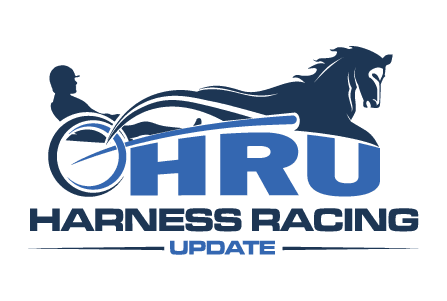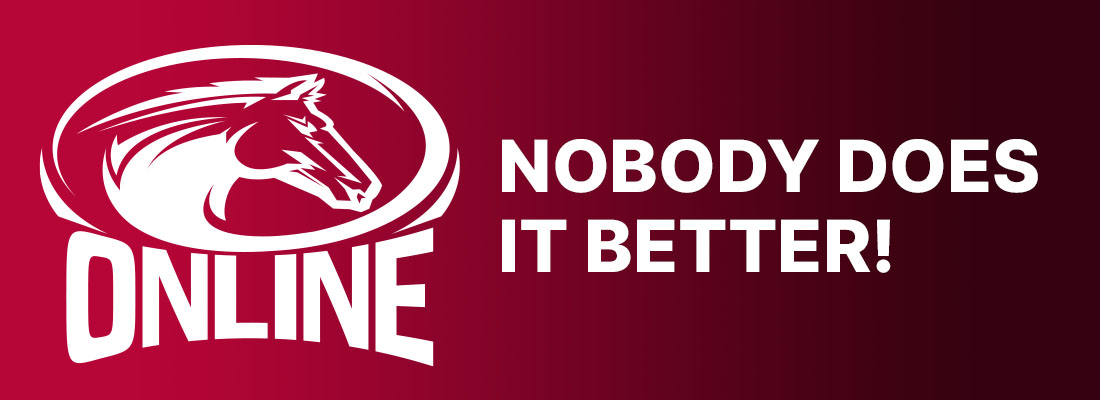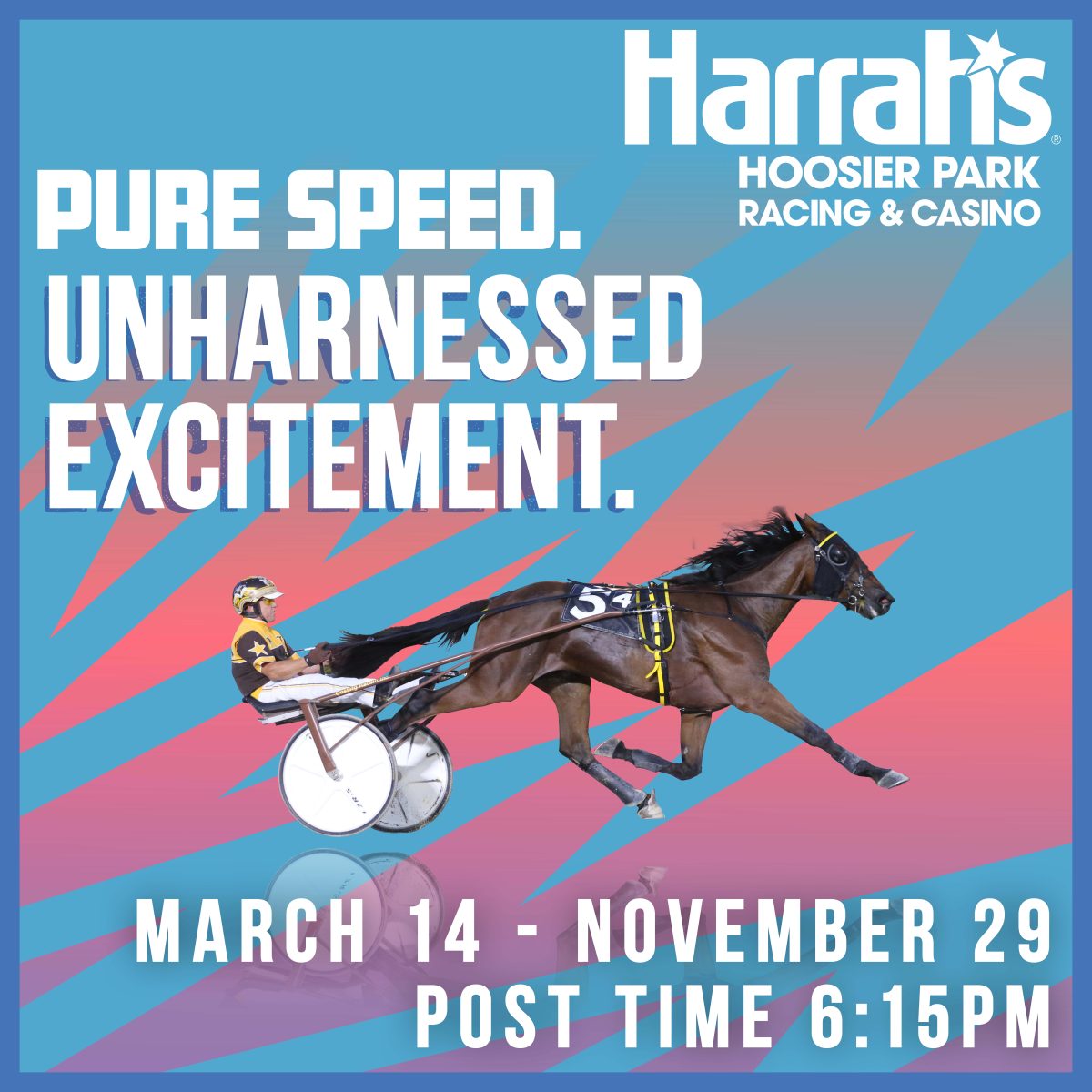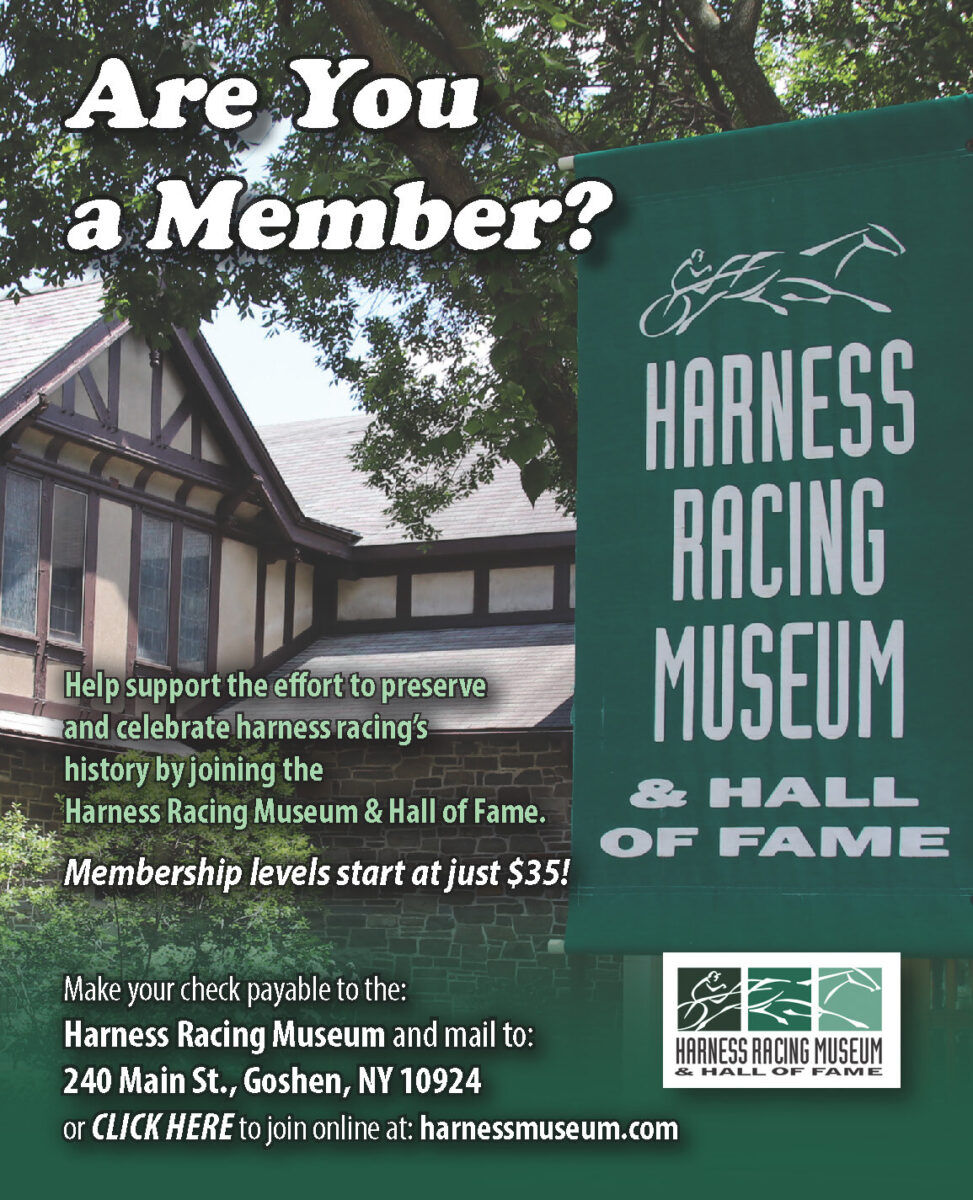Joe Morris brings impressive and extensive resume to management of Caesars Entertainment tracks
by Murray Brown
Joe Morris has likely occupied as many executive positions in all forms of pari-mutuel racing as anybody and many more than most.
I caught up with him as he was driving to the two Indiana racetracks that he oversees, the thoroughbred track Indiana Grande in Shelbyville and the standardbred raceway, Harrah’s Hoosier Park in Anderson.
Those are not the only two racetracks that he is involved with in his role as senior vice president overseeing racetracks for Caesars Entertainment. He has just finished an excellent, but somewhat bittersweet season at Pompano Park and is looking forward to the coming opening of Scioto Downs just south of Columbus, OH.
In addition to a lifetime of being involved with both thoroughbreds and standardbreds, Morris has also held management positions in dog racing, casinos and horsemen’s organizations.
He is known throughout racing as a reasonable straight shooter who is not only able to look at a situation from the side of the fence where he stands, but he is able to empathize with those standing across from him. Above everything else, he considers himself to be a fair person.
Morris’ roots with horse racing, particularly of the standardbred variety, run deep.
His uncle Loring Norton and cousin Bruce Ranger are Hall of Famers in their native state of Maine.
The Norton farm still operates as the longest continually run farm in the state.
Bruce Ranger can be mentioned in the same breath as other great drivers from Maine such as Walter Case Jr and Billy Parker Jr.
It was with Loring Norton that Morris got his first start working around horses.
As a 12-year-old he started working on the farm and with Norton’s horses. It was at that age that he realized that if things worked out in the fashion he hoped they might, that is what he would like to spend his working life doing.
His racetrack experience began when he worked for the Sullivan family who owned the former New Hampshire harness track Hinsdale Raceway which was transformed into a dog track. There was a period of three years when they operated Bay State Raceway, AKA Foxboro Raceway in Foxboro, MA.
But operating those racetracks was not the only thing that Morris did in his 18 years with the Sullivans.
The Sullivan family were involved in many ventures, some of them quite successful, others not so much.
From there he went to the National Thoroughbred Racing Association (NTRA) and to the Breeders’ Cup when they merged with NTRA and was president of NTRA purchasing which sold sponsorships and provided large discounts to the horse world.
He ran the Thoroughbred Times where he became its publisher and the publisher of several other magazines.
Unfortunately, he picked a poor time to be in the magazine business. The Times and numerous other paper periodicals were among the biggest victims of the online explosion.
In 2010, he was offered a position with the Stronach group of racetracks. It was a great learning experience, especially working at Santa Anita.
Morris stayed with the Stronach group through 2013 when he was offered a position as the head of the Thoroughbred Owners of California.
It was working with that group that he became associated with prominent thoroughbred owner Mike Pegram.
Pegram was a director of El Dorado Casinos. When El Dorado purchased Caesars Entertainment, Pegram also became a director of the new entity.
One of the first things he suggested was that Joe Morris be placed in charge of all Caesars racetracks.
Thus, in early 2020, Morris assumed his new role.
That’s quite a resume. Are there any areas in racetrack management where you haven’t been involved?
“If there are any, I am sure that they are few. The one area of which I am proudest is that with each step I’ve climbed a notch on the proverbial totem pole. Since I was old enough to know what I wanted to do with this life of mine, it has involved horses and the wonderful people involved with every facet of horse racing.”
As far as harness racing is concerned, you are presently involved with Pompano Park, Hoosier Park, Harrah’s Philadelphia and Scioto Downs. That’s four different tracks in four distinct geographical areas. Do you have any trouble keeping up with them?
“Not really, the chief reason being that the day-to-day management of all four tracks is entrusted in very capable hands. Pompano and Scioto are under the control of Gabe Prewitt, who I consider to be the finest young executive that I’ve come across in track management. The day-to-day operations of Harrah’s Philly have been run by Barry Brown for quite some time. Rick Moore has been in the front row of Caesar’s Hoosier for awhile, as well. He has done an exemplary job. His work on the two years that Hoosier hosted the Breeders Crowns has been unmatched in the history of those events. I need add that each time that they were held, the racing gods did not act in his favor. The first was hampered by inclement weather, then COVID-19 tried to wipe us out last year. The day-to-day operations at Scioto Downs are administered by Jason Roth, who is also the race secretary and a USTA director.”
Let’s talk about Pompano and Gabe Prewitt.
“Gabe has done as good a job of managing the racing and wagering components of both Pompano and Scioto as any executive in racing today. He has responsibilities in those areas across all of our harness tracks. If I had to use one word to describe Gabe it would be talent. He has that rare attribute that is not often found in management in general, or racetrack management in particular. That is, he checks all the boxes. He studies and knows the numbers. He knows the people putting on the show. He is very well aware of their needs and wants. Perhaps, most important of all, he knows his customers, not only because he has been one of them, but also because he still is. He likes to gamble on horses. Because of this, he understands their likes and dislikes. He can relate. He is also very innovative in terms of increasing handle. He understands that Pompano or Scioto may not be The Meadowlands and Mohawk. He knows that we need to properly place our product against our competition. To use a baseball term, he will look to hit them where they ain’t.
“In its 57th year of operations this year, Pompano set an overall all-time handle record and also had 21 days where the handle eclipsed a million dollars.”
Do you see any future for harness racing in Florida?
“A lot would depend on whether you were speaking of a short- or long-term future. Insofar as Pompano is concerned, barring anything unforeseen, this coming season will be our last. We are in sincere conversations with the horsemen as to what the future of harness racing in Florida may look like. We both think that there are some viable options.”
Have you been much involved with Harrah’s Philadelphia?
“Probably not as much as I should. But good things are happening there, as well. Takeout has been slightly lowered to the benefit of the customer. They’ve added some new forms of wagering and will continue to try and improve the wagering benefits to the customers. We feel the handle is underperforming there and we believe there is a great deal of opportunity available.”
The numbers you folks did at Scioto last year were astounding. What do you attribute it to.
“Motivation, inspiration and to a limited degree luck. Gabe, Jason Roth and their team did a great job. They created interest in wagering on the product, that had been previously been lacking. They instituted several new forms of wagering. They stayed on top of every race and did their darndest to generate the greatest pari-mutuel benefit from each. Unfortunately, COVID-19 also played a role. The absence of racing in several other venues contributed to interest in wagering at Scioto. I’d be remiss if I didn’t mention the great competitive show that the horsemen there put on. They are there to race horses and that is what they do.”
Last is Hoosier Park where the folks have always done an exemplary job.
“Yes, indeed. They, led by Rick Moore, have done that. As I said above, their work on the Breeders Crowns have been great. They present a terrific, highly competitive product. Every stall in the complex is covered by a camera 24/7. It is a great deterrent for any improprieties and greatly adds to the safety of the stable area. The folks in that part of the country really enjoy their racing and their horses.
I hope that the Breeders Crown will be evolving into a three-way rotating roadshow that Hoosier can be a part of. We’ve enjoyed our partnership with the Hambletonian Society and hope that it continues indefinitely. Thanks need to be given to the Indiana Standardbred Association and the horsemen who bear part of the expense involved in putting this great show on.”
What is our sport’s biggest problem?
“I would say that there are two. The first is integrity and the second is getting people out to the racetrack. Integrity has always been my highest priority in horse racing but never so much as now. In the past, the problem was cheating with horses in order to set up a score. Today it’s the use of performance enhancing drugs to give them an unfair advantage. We are especially vulnerable today with the presence of animal welfare and animal rights groups that wouldn’t hesitate to use this as a means of shutting us down. My feeling is that HISA (the Horseracing Integrity and Safety Act), like it or hate it, is now the law of the land. Even if the challenges against it are successful, the losses in public sentiment could be far greater than any gains they might acquire. I think we’d be better served inside the tent trying to work with our thoroughbred brethren to resolve the issues that concern us, than outside it fighting them. The bottom line is that all horsepeople need to prioritize the health and safety of the horse first and foremost.
On track attendance is the meat of the sport. I would hazard a guess that the love of the horse is part of the reason that many people go to the racetrack.
“When I was at Santa Anita, we did numerous studies on how to get people to the racetrack. The one conclusion we reached is that with today’s youth, just going to the races to bet on horses will not get them there with any regularity. There has to be something added. It could be handicapping contests, wine tastings, food trucks or several other things. But waiting 25 minutes until the next race is ready to go off isn’t going to get or keep them there. It might keep a small core of gamblers, but it’s not going to generate added interest in the sport by our youth. There have been over 40 racetracks go under in the last few decades. Unfortunately, we probably are not done.”
What is your favorite of all the sports with which you have been involved?
“My heart is with harness racing. I was born into it. Many of my best friends are and have been in the sport. I still enjoy occasionally jogging a horse. That’s something in which we have a big advantage over our thoroughbred friends, but so few of us have taken advantage of. I love just about everything involving a horse, whatever its breed or lineage.”
You’ve been at this pretty much all of your life, what does the future hold for you?
“I can never see myself without horses in one form or another being part of my life. I own and live on a 20-acre farm outside of Lexington. It’s rare that I’m not around a horse or more. I’ve got one broodmare that is carrying an Indiana-sired foal. I asked Myron Bell what he thought of her. In true Myron fashion, he answered quite honestly, for which I respect him. I’ll still keep her anyway.
“As far as track management is concerned, I’ll go on as long as I am wanted, still having fun and I can believe that I can make a difference.”
Have a question or comment for The Curmudgeon?
Reach him by email at: hofmurray@aol.com.

















